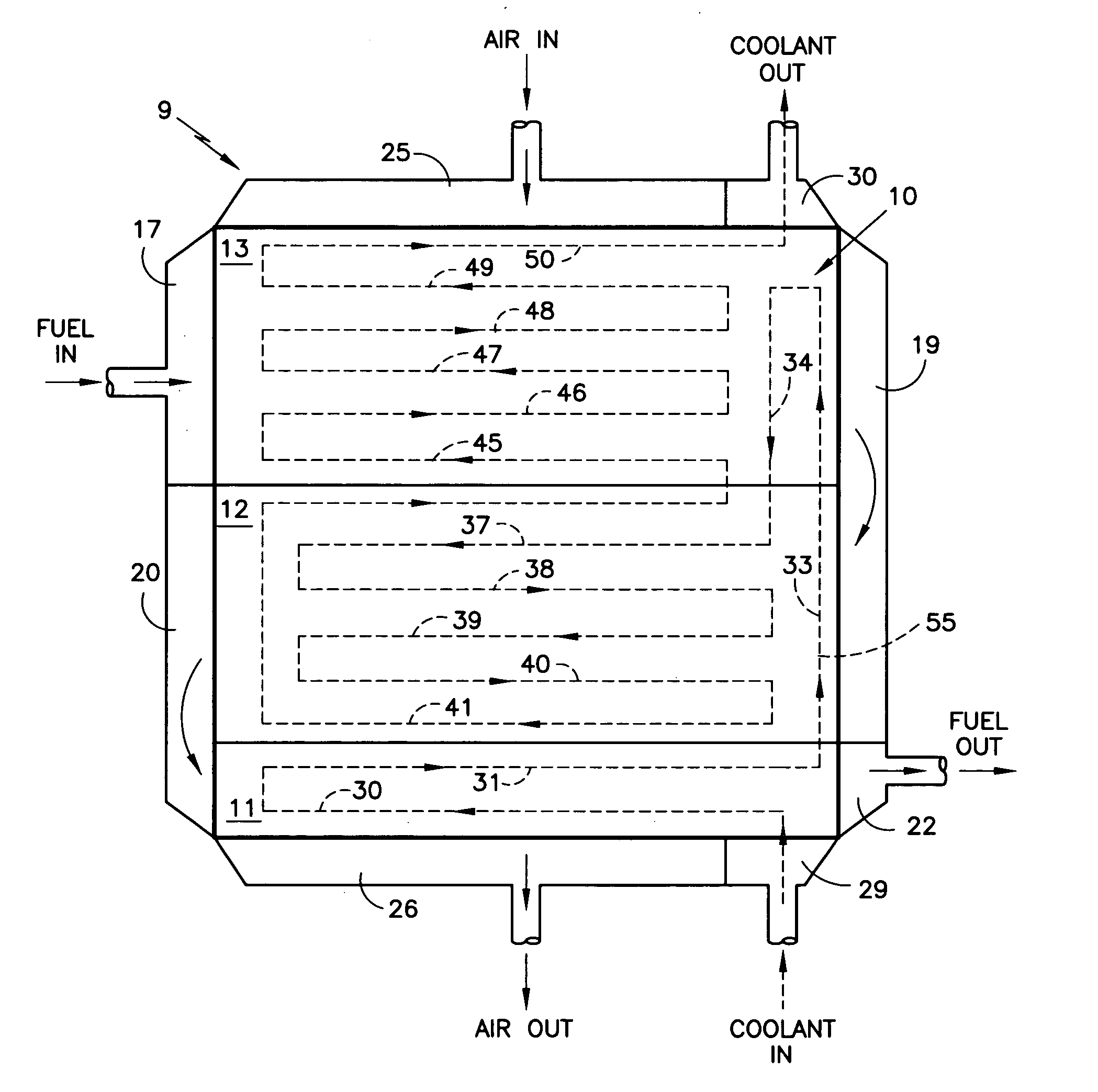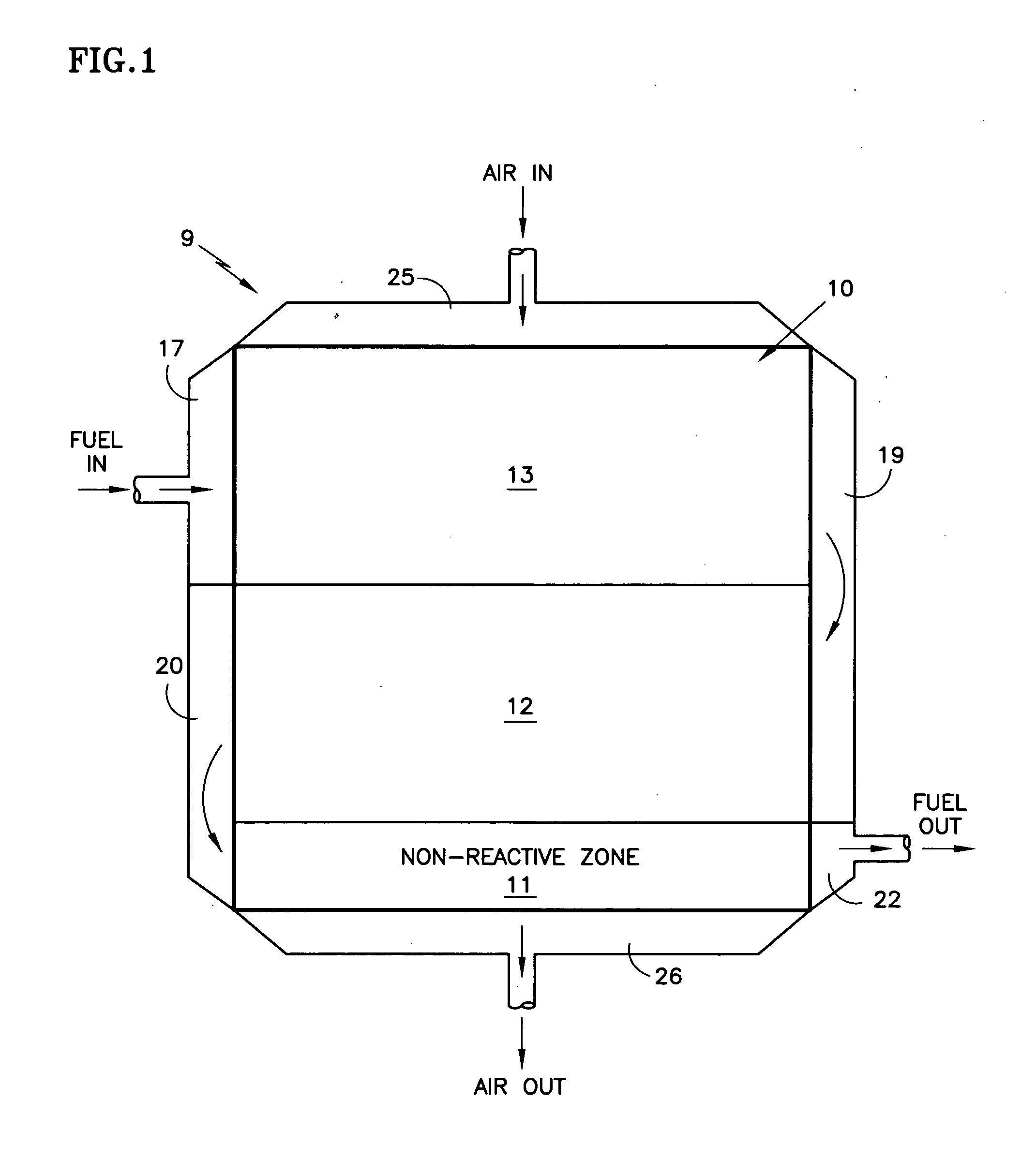Fuel cell coolers with inverse flow and condensation zone
- Summary
- Abstract
- Description
- Claims
- Application Information
AI Technical Summary
Benefits of technology
Problems solved by technology
Method used
Image
Examples
Embodiment Construction
[0015] Referring to FIG. 1, a fuel cell stack 9, according to the invention, includes a plurality of fuel cells 10 having three zones 11-13. Each of the zones 11-13 generally overlaps one of three fuel flow passes in the fuel flow channels. Fuel enters through a fuel inlet manifold 17, and flows to the right (as seen in FIG. 1) through the fuel flow fields associated with the third zones 13. Then the fuel flows through a turnaround manifold 19 and then to the left (as seen in FIG. 1) through the fuel flow fields associated with the second zones 12, to a second turnaround manifold 20, and then to the right (as seen in FIG. 1) through the flow fields associated with the first, non-reactive zones 11, and outwardly through a fuel exit manifold 22.
[0016] The first zones 11 are non-reactive because the portion of each fuel cell comparable with the first zones 11 do not have a cathode catalyst and therefore do not react with the reactant gases.
[0017] In the embodiment herein, the oxidant...
PUM
 Login to View More
Login to View More Abstract
Description
Claims
Application Information
 Login to View More
Login to View More - R&D
- Intellectual Property
- Life Sciences
- Materials
- Tech Scout
- Unparalleled Data Quality
- Higher Quality Content
- 60% Fewer Hallucinations
Browse by: Latest US Patents, China's latest patents, Technical Efficacy Thesaurus, Application Domain, Technology Topic, Popular Technical Reports.
© 2025 PatSnap. All rights reserved.Legal|Privacy policy|Modern Slavery Act Transparency Statement|Sitemap|About US| Contact US: help@patsnap.com



